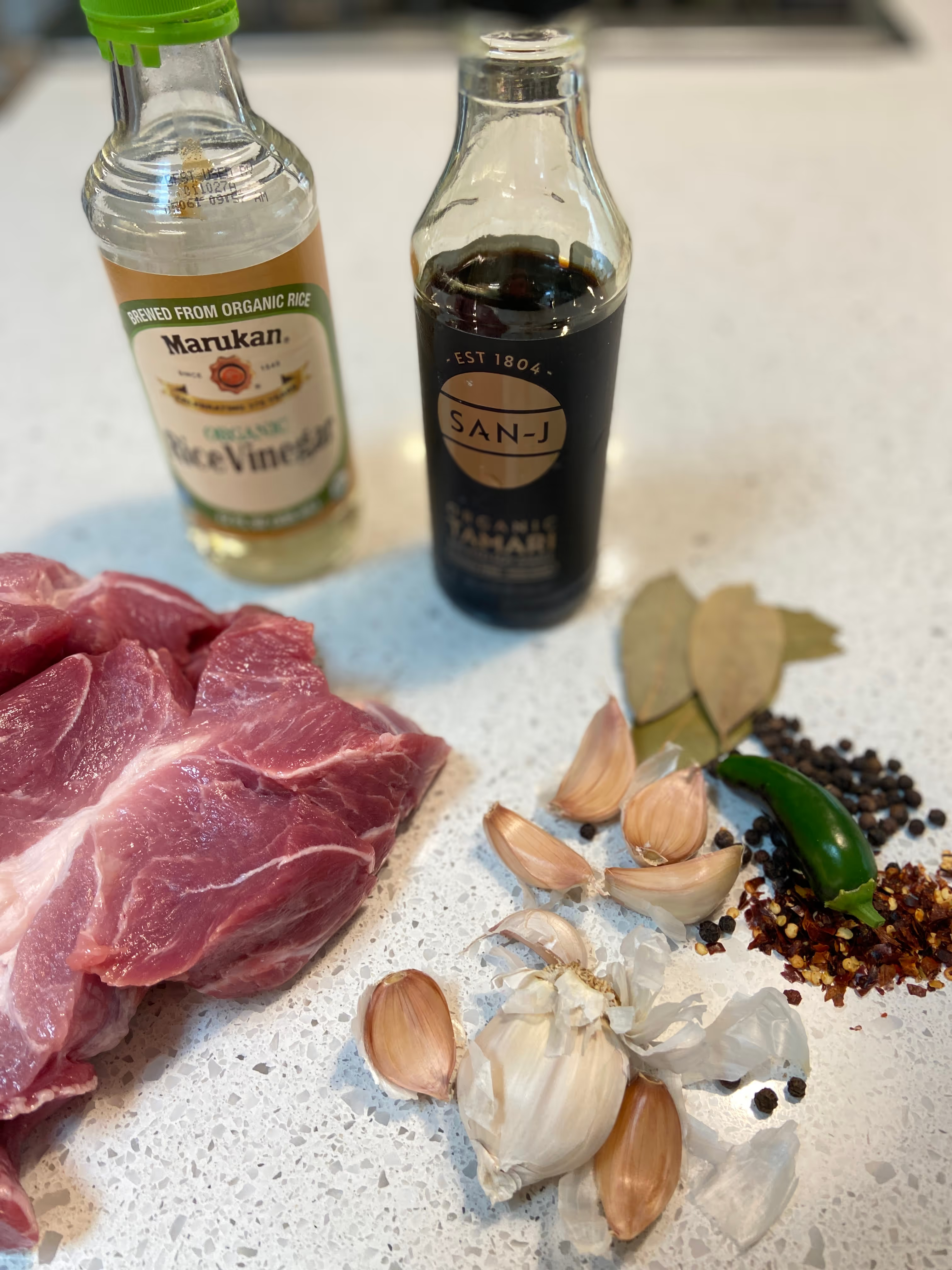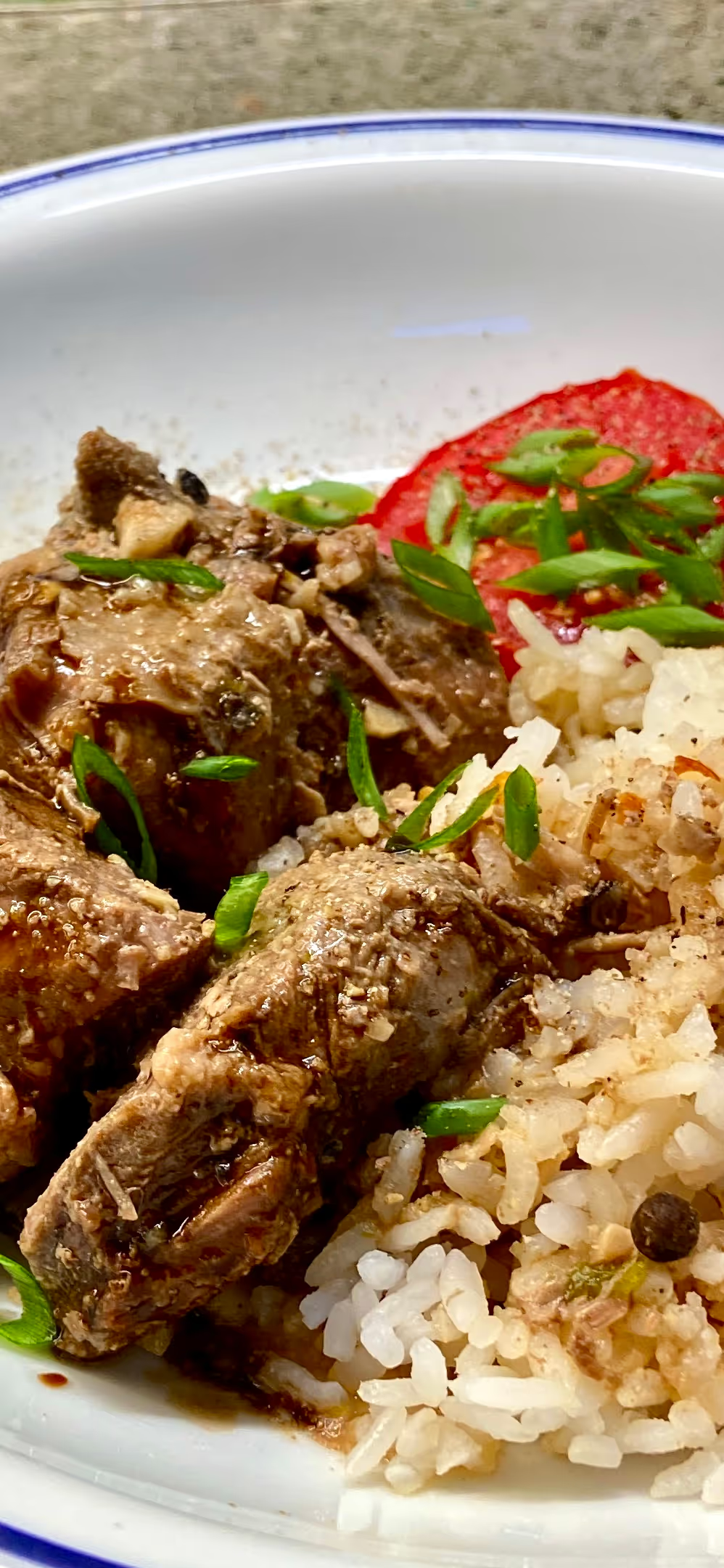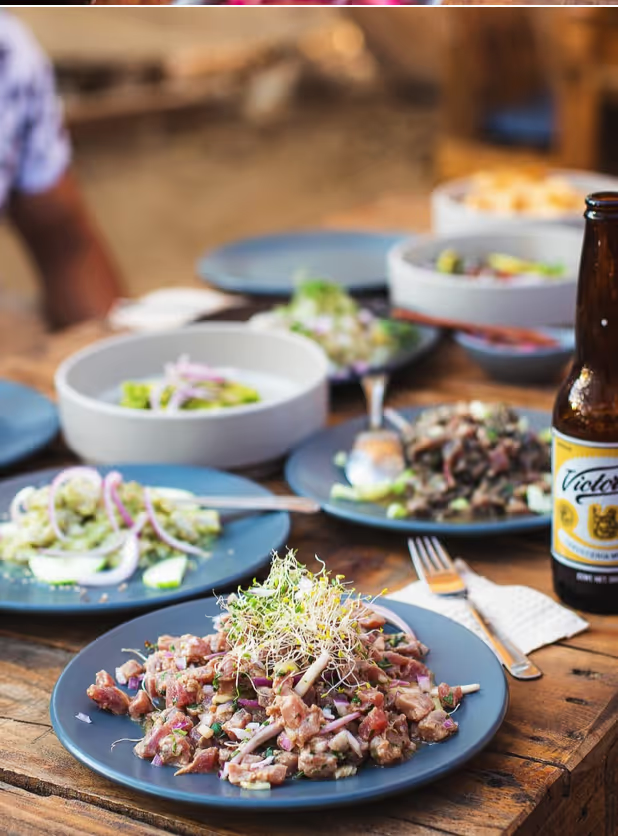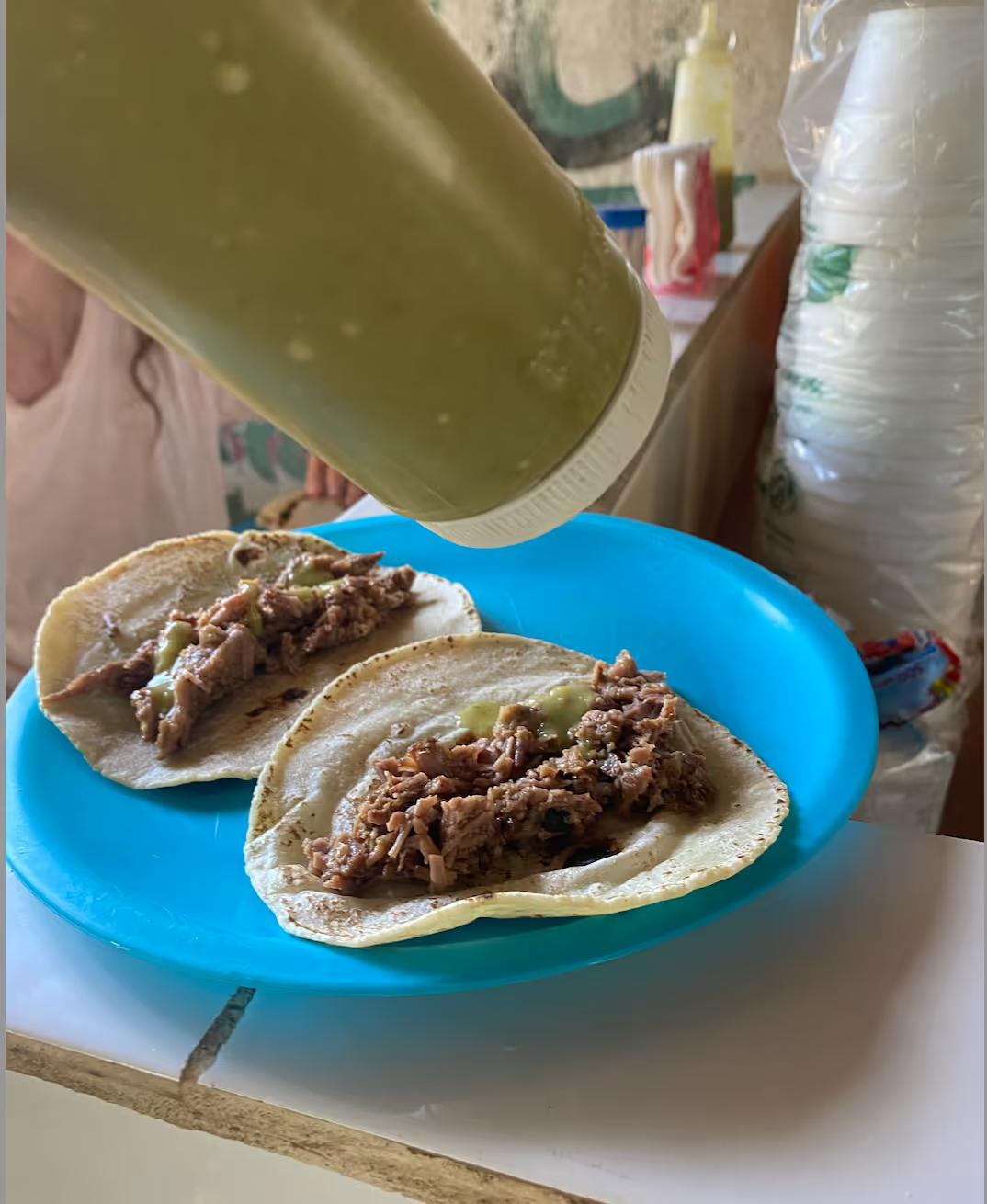GUEST CHEF: JOCELYN FORMENTO
ADOBO: Five-Ingredient Umami-Braised Pork: A Taste That Crossed Oceans
If Mexico’s adobo is bold and fiery with chilies, the Filipino version leans in a different direction: slow, savory, and deeply comforting. Picture pork slowly braising in soy sauce, vinegar, and garlic, with the fragrance of bay leaves and the gentle bite of black pepper filling the kitchen. The result is a rich, umami-packed dish that tastes even better the next day—if you can wait that long.

INGREDIENTS:
- 2 lbs pork butt or shoulder, cut into chunks
- 1/2 cup soy sauce
- ¼ cup rice vinegar (or traditional coconut vinegar if available)
- 1 Tbsp black peppercorns, crushed (sub ground black pepper),
- jalapeño or red chile flakes to your liking
- 6–8 cloves garlic, roughly chopped (about 2 Tbsp)
- 3–4 bay leaves


Marinate the pork: In a large bowl, combine the pork, soy sauce, vinegar, garlic, pepper, and bay leaves. Let it rest for at least 30 minutes, or refrigerate overnight for a deeper flavor. Sear the meat: Heat a heavy pot or Dutch oven. Lift pork from the marinade (reserve liquid) and sear until browned on all sides. Simmer low and slow: Pour the reserved marinade over the pork. Add ½–1 cup of water, just enough to cover the meat. Bring to a boil, then reduce heat to low, cover, and simmer for 45–60 minutes, until the pork is tender and infused with flavor. Finish and serve: Uncover and let the sauce reduce to your desired thickness. Taste and adjust with extra soy sauce or vinegar if needed. Serve hot over steamed rice.
TIPS & VARIATIONS
Make-ahead magic: Adobo tastes even better the next day, after the flavors have deepened. Store leftovers in the fridge for up to 4 days. Freezer-friendly: This dish freezes beautifully—portion into containers and reheat gently for a quick weeknight meal. Protein swaps: Try chicken thighs, drumsticks, or a mix of pork and chicken for a lighter take. Extra umami: Add a splash of fish sauce or a pinch of sugar to balance the tang of vinegar if desired. Vegetarian twist: Swap the meat for firm tofu or mushrooms—adobo’s sauce is so flavorful it carries the dish.

Adobo is more than just a beloved Filipino staple; it’s a dish with a passport. Historians believe it traveled aboard the Manila–Acapulco Galleon trade route from the 1500s to the 1800s, carrying flavors between Asia and the Americas. Vinegar, the dish’s star ingredient, was prized for its preservative qualities—essential for long sea voyages where fresh provisions were rare. Later, Chinese traders brought soy sauce to the Philippines, transforming the recipe and giving it that irresistible umami balance we crave today.
Good luck,
Jocelyn
See Jocelyn's beautiful fiber arts at Jocelynformento.com


.avif)







.avif)





%2022.56.27.avif)
%2017.27.38.avif)
%20(1).avif)


